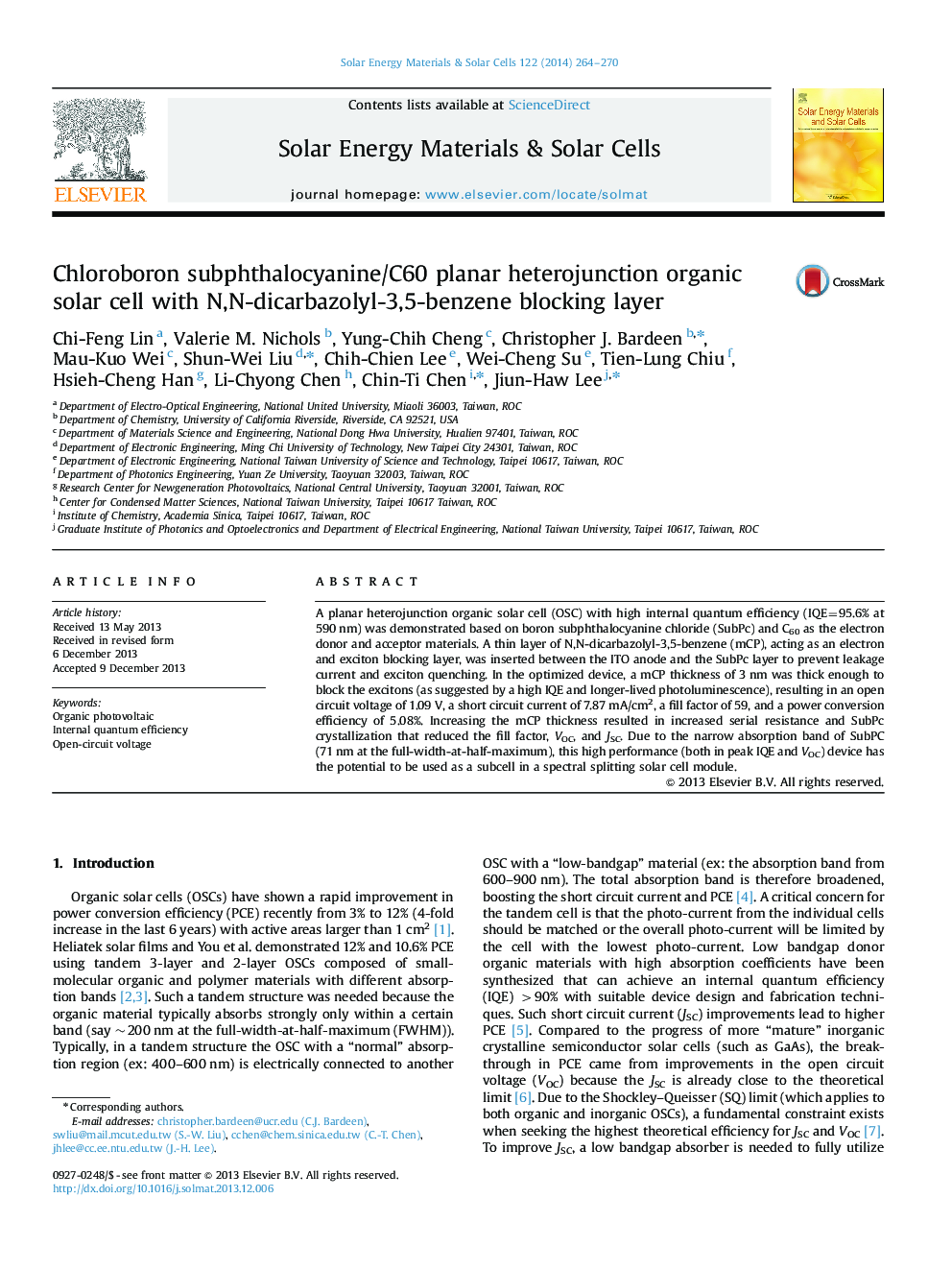| Article ID | Journal | Published Year | Pages | File Type |
|---|---|---|---|---|
| 6535863 | Solar Energy Materials and Solar Cells | 2014 | 7 Pages |
Abstract
A planar heterojunction organic solar cell (OSC) with high internal quantum efficiency (IQE=95.6% at 590Â nm) was demonstrated based on boron subphthalocyanine chloride (SubPc) and C60 as the electron donor and acceptor materials. A thin layer of N,N-dicarbazolyl-3,5-benzene (mCP), acting as an electron and exciton blocking layer, was inserted between the ITO anode and the SubPc layer to prevent leakage current and exciton quenching. In the optimized device, a mCP thickness of 3Â nm was thick enough to block the excitons (as suggested by a high IQE and longer-lived photoluminescence), resulting in an open circuit voltage of 1.09Â V, a short circuit current of 7.87Â mA/cm2, a fill factor of 59, and a power conversion efficiency of 5.08%. Increasing the mCP thickness resulted in increased serial resistance and SubPc crystallization that reduced the fill factor, VOC, and JSC. Due to the narrow absorption band of SubPC (71Â nm at the full-width-at-half-maximum), this high performance (both in peak IQE and VOC) device has the potential to be used as a subcell in a spectral splitting solar cell module.
Related Topics
Physical Sciences and Engineering
Chemical Engineering
Catalysis
Authors
Chi-Feng Lin, Valerie M. Nichols, Yung-Chih Cheng, Christopher J. Bardeen, Mau-Kuo Wei, Shun-Wei Liu, Chih-Chien Lee, Wei-Cheng Su, Tien-Lung Chiu, Hsieh-Cheng Han, Li-Chyong Chen, Chin-Ti Chen, Jiun-Haw Lee,
